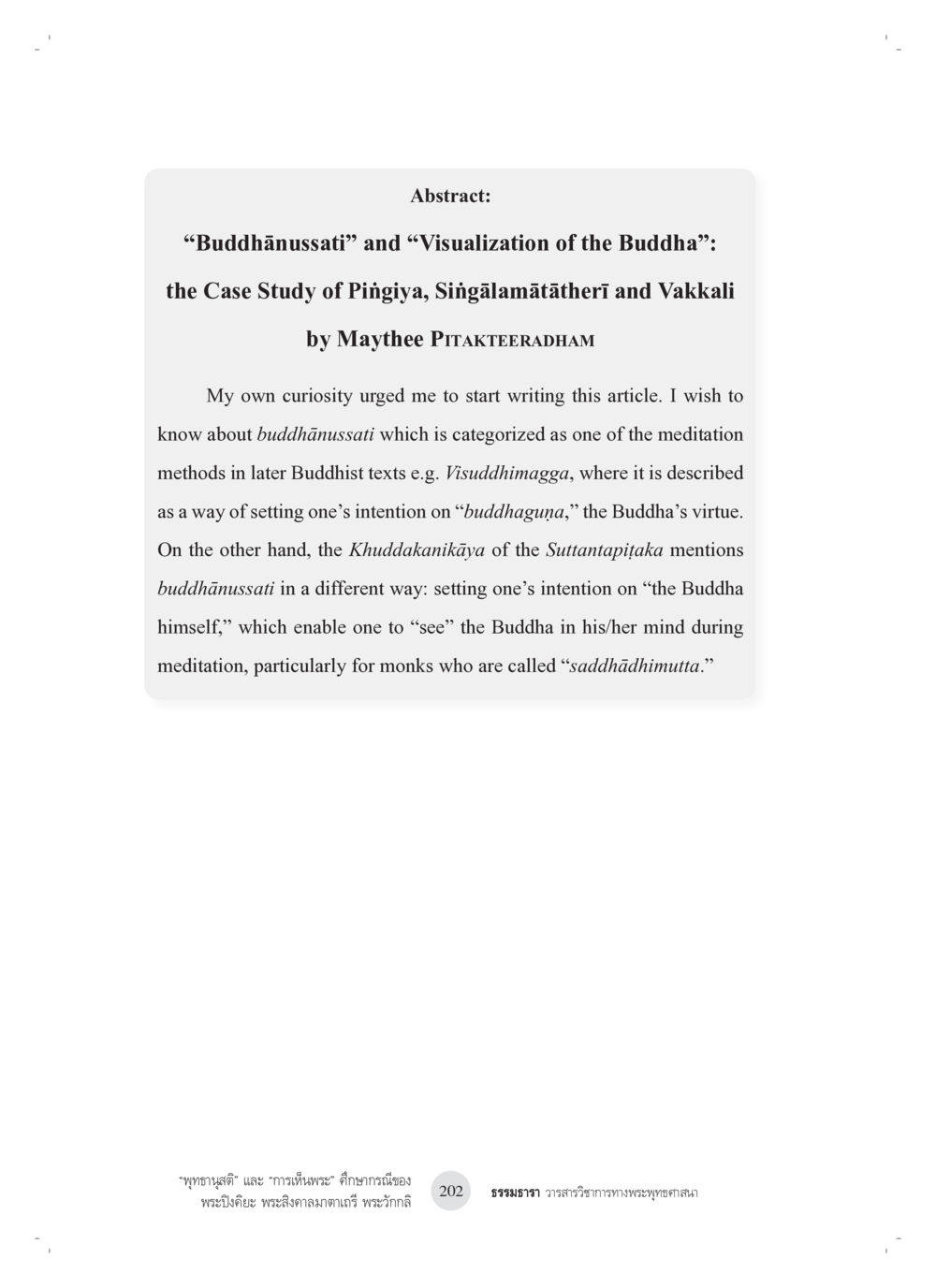Buddhānussati and Visualization of the Buddha : หน้า 2/57
“พุทธานุสติ” และ “การเห็นพระ”: ศึกษากรณีของ พระปิงคิยะ พระสิงคาลมาตาเถรี พระ วักกลิ : หน้า 2/57 An exploration of the meditation method buddhānussati, focusing on its practices and significance in Buddhist texts.
0 ครั้ง

สรุปเนื้อหา
บทความนี้พูดถึงการปฏิบัติธรรมของพุทธานุสรณ์ที่เป็นวิธีการสมาธิในพระไตรปิฎก โดยเฉพาะการตั้งใจที่ 'บuddhaguṇa' หรือคุณธรรมของพระพุทธเจ้า การอ้างอิงจากคุฎกนิกายที่กล่าวถึงการตั้งใจที่พระพุทธเจ้าเอง โดยช่วยให้ผู้ปฏิบัติสามารถ 'เห็น' พระในจิตใจขณะฝึกสมาธิ ซึ่งเป็นหลักปฏิบัติที่สำคัญสำหรับพระสงฆ์ในกลุ่ม 'saddhādimutta' พุทธานุสรณ์จึงเป็นจุดเชื่อมโยงระหว่างการฝึกสมาธิกับความเชื่อในพระพุทธเจ้า.
หัวข้อประเด็น
- buddhānussati
- visualization of the Buddha
- meditation methods
- importance of intention
- Suttantapitaka
ข้อความต้นฉบับในหน้า
**Abstract:**
“Buddhānussati” and “Visualization of the Buddha”: the Case Study of Piṅgiyā, Singālamātātheri and Vakkali
by Maythee PITAKTEERADHAM
My own curiosity urged me to start writing this article. I wish to know about buddhānussati which is categorized as one of the meditation methods in later Buddhist texts e.g. Visuddhimagga, where it is described as a way of setting one’s intention on “buddhaguṇa,” the Buddha’s virtue.
On the other hand, the Khuddakanikāya of the Suttantapitaka mentions buddhānussati in a different way: setting one’s intention on “the Buddha himself,” which enable one to “see” the Buddha in his/her mind during meditation, particularly for monks who are called “saddhādimutta.”
---
**Page Footer:**
"พุทธานุสรณ์" และ "การนึกถึงพระ" ศึกษาการน้อม
พระปิ่นปิย พระสิคาลมงคลแก้ พระภิกษุ
202 ธรรมธารา วรรณวิริยาธารทพรพุทธศาสนา
หน้าหนังสือทั้งหมด
หนังสือที่เกี่ยวข้อง
Load More

























































